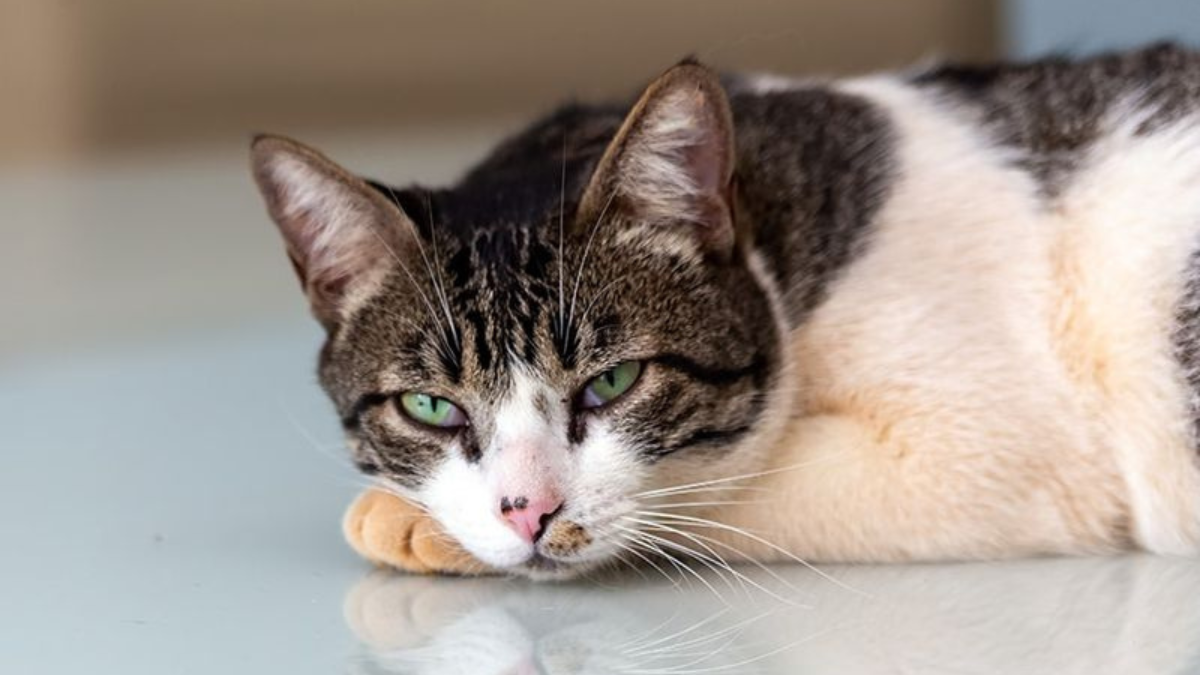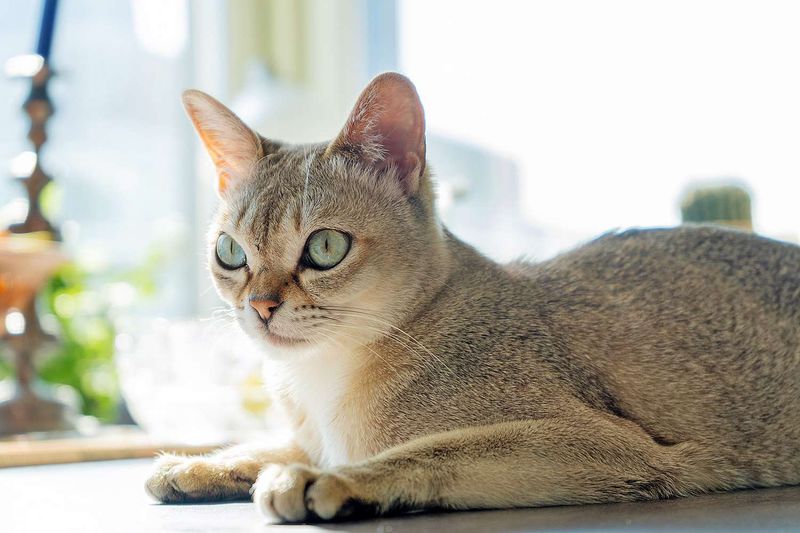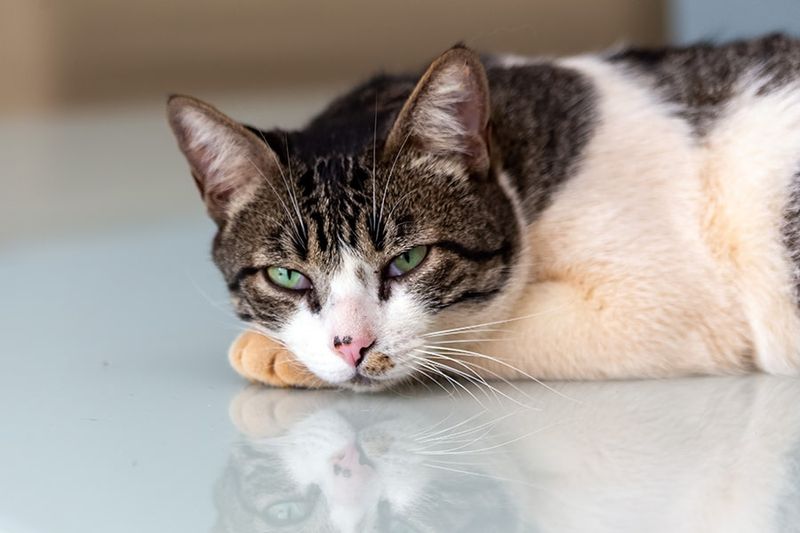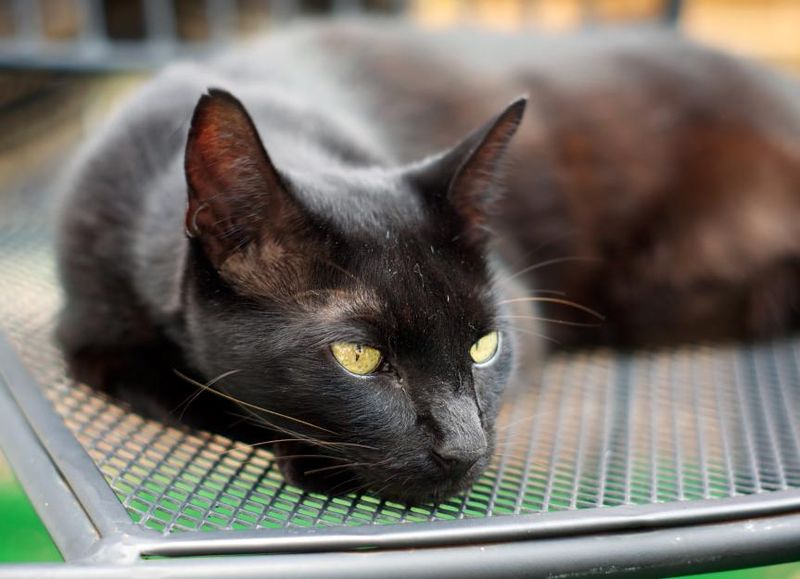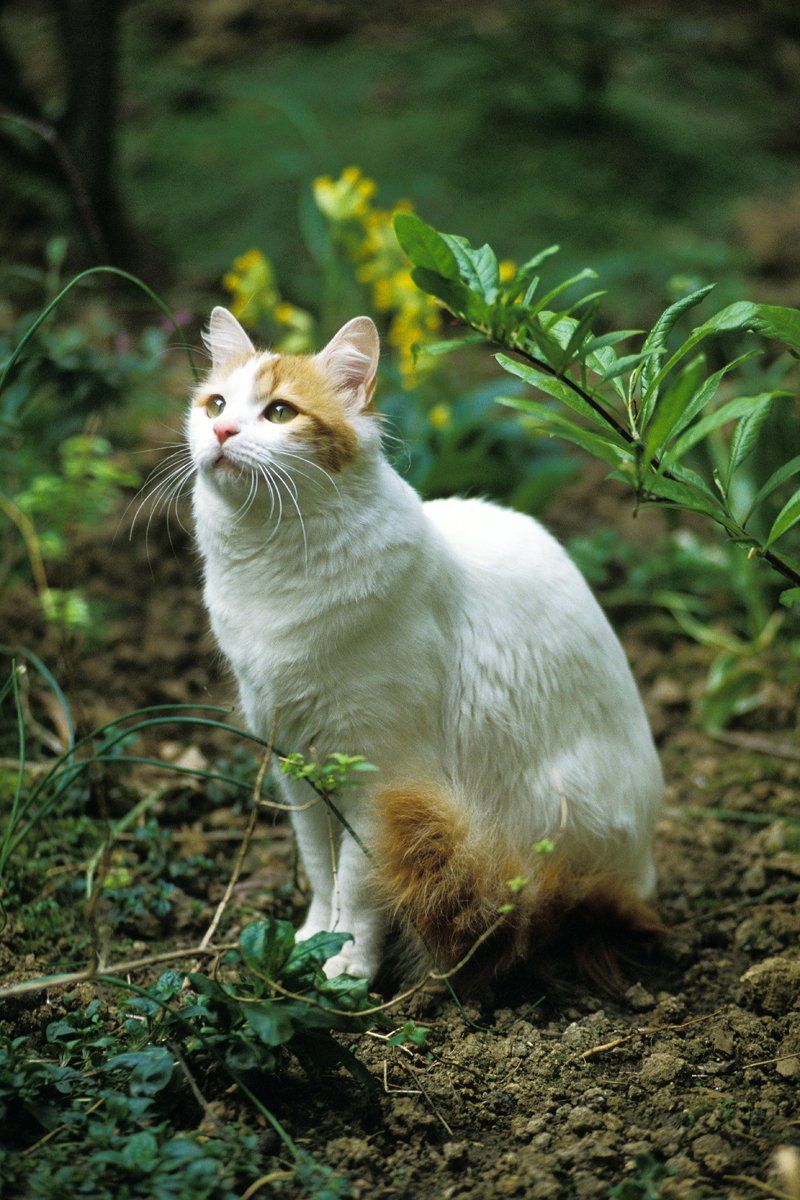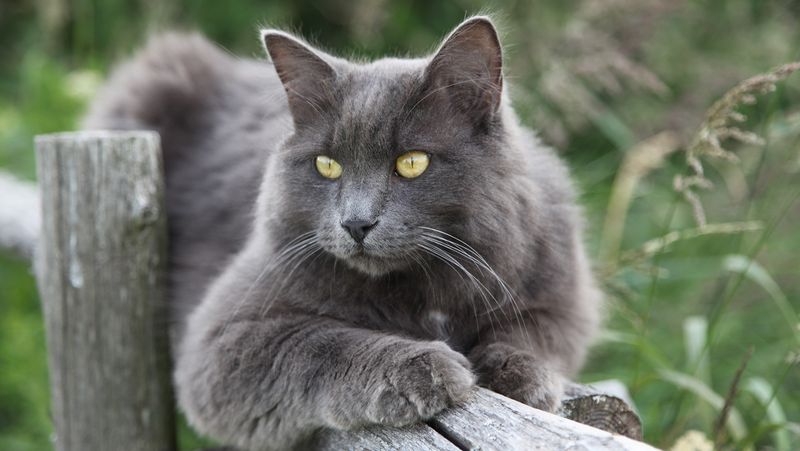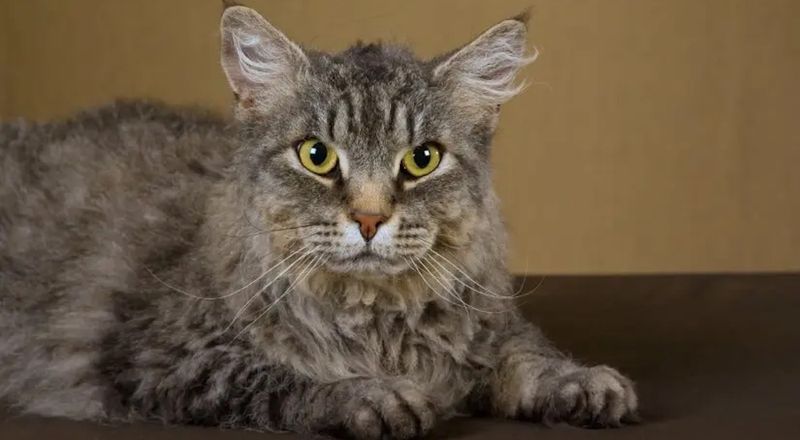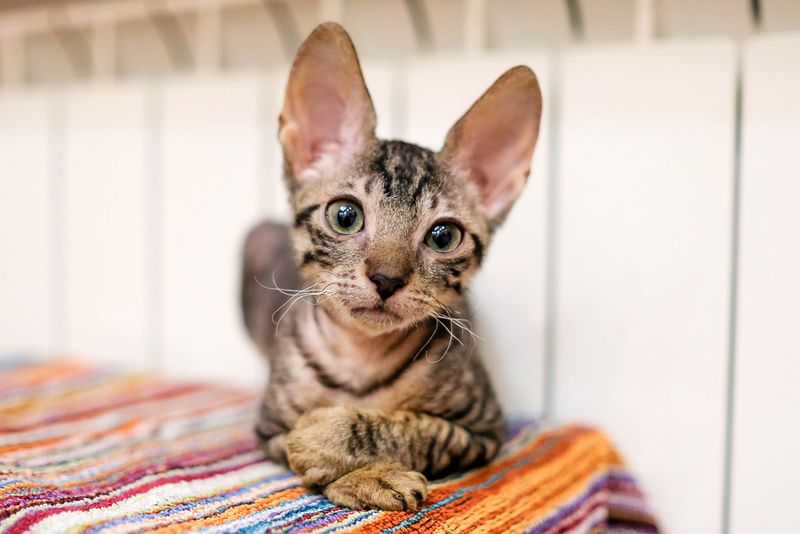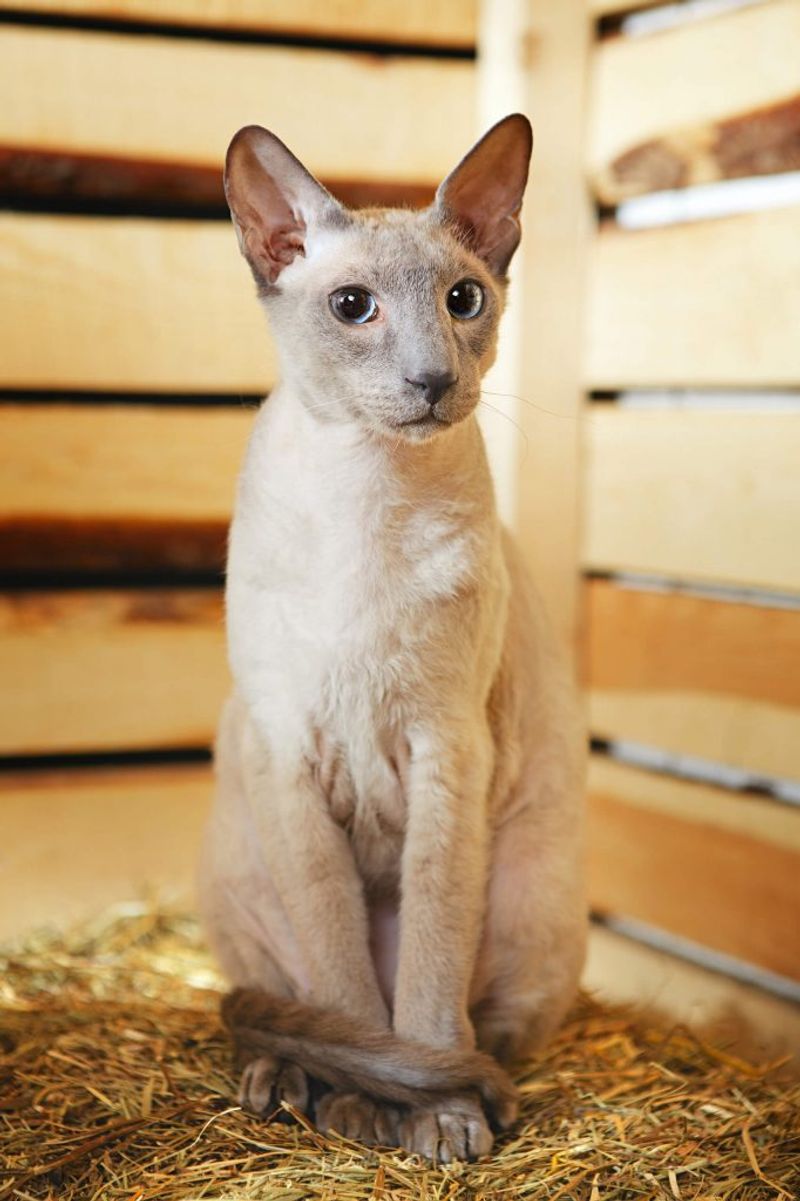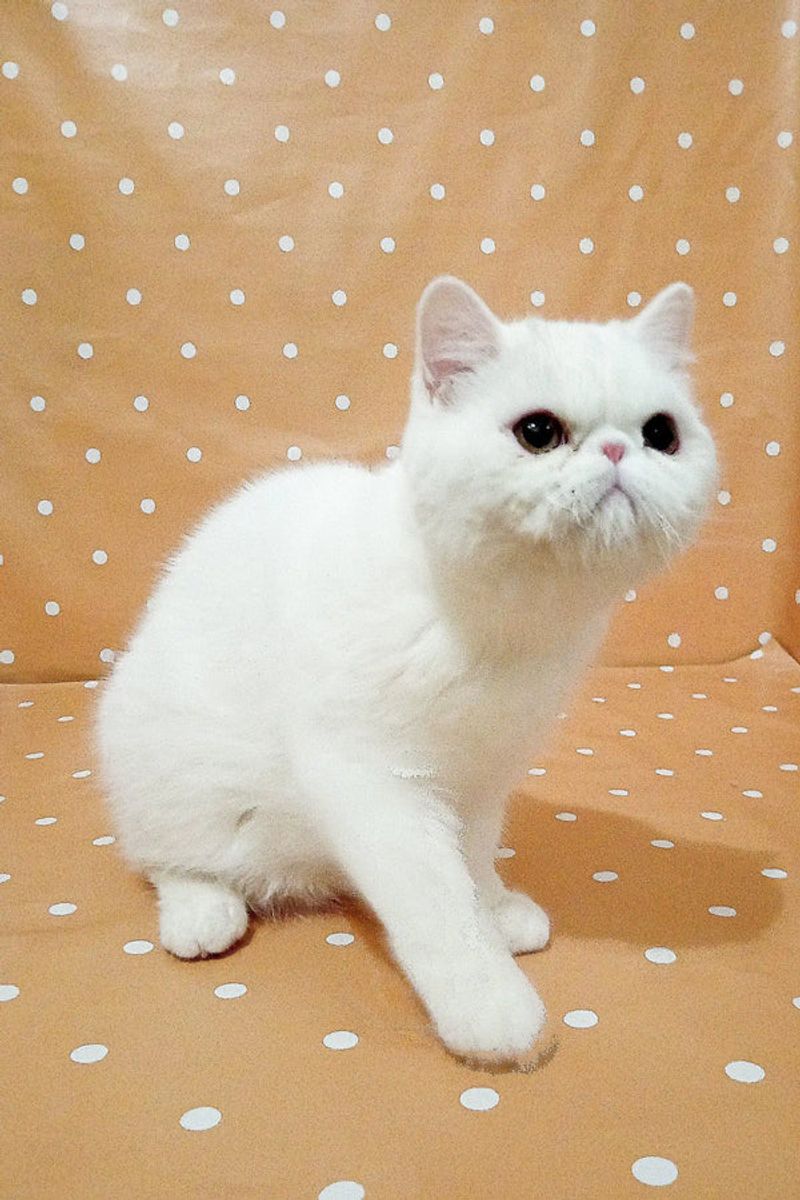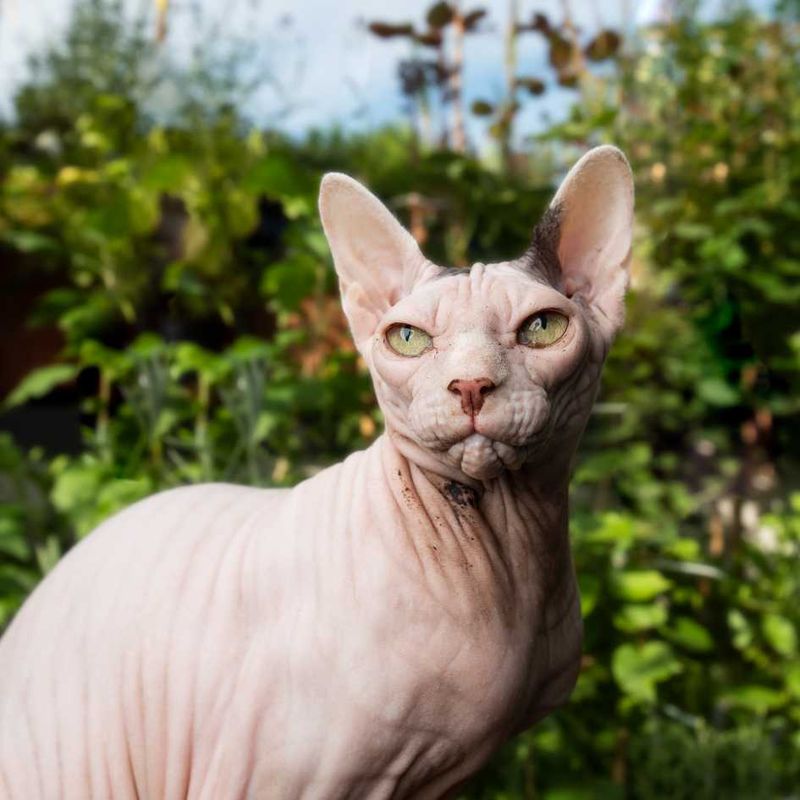📖 Table of Content:
Shelters across the country are filled with cats in need of permanent homes, yet certain breeds are often overlooked. These often-overlooked cats may wait months or even years for adoption. The reasons are rarely about the cats themselves, but rather how they are perceived.
Breeds such as the Siamese or Maine Coon are adopted quickly due to their striking looks and familiar reputations. In contrast, less recognizable or misunderstood breeds struggle to gain attention. Misconceptions about behavior, grooming requirements, or health concerns often play a role.
Highlighting these overlooked cats can shed light on their unique qualities and gentle natures. With greater awareness, more people may choose to adopt them. Every cat deserves a chance at a loving home, regardless of breed or appearance.
1. Korat
Silver-blue beauties with heart-shaped faces, Korats often languish in shelters because they’re uncommon and unfamiliar to most adopters. Many people mistake them for Russian Blues or ordinary gray cats.
Korats form incredibly strong bonds with their families and are considered symbols of good fortune in their native Thailand. They’re intelligent, gentle companions who prefer quiet environments.
Despite their rarity and pedigree status, these cats frequently get passed over simply because potential adopters don’t recognize their special qualities and heritage.
2. Singapura
One of the world’s smallest cat breeds, Singapuras often get overlooked because of misconceptions about their size. Many adopters worry these tiny felines are sickly or underdeveloped when they’re actually perfectly healthy.
Originally from Singapore, these cats typically weigh just 4-8 pounds fully grown. Their sepia-toned coats and large eyes give them an eternally kitten-like appearance that belies their robust health and playful personalities.
Shelter workers report that Singapuras wait 60% longer for adoption than average-sized cats.
3. American Wirehair
Born from a spontaneous mutation in upstate New York, American Wirehairs possess uniquely textured coats that feel like steel wool. Their unusual fur often scares away potential adopters who mistakenly believe they require complex grooming or cause allergies.
Contrary to these assumptions, their crimped coats are relatively low-maintenance and many allergy sufferers report fewer reactions to them. These cats combine playful energy with a laid-back temperament that makes them excellent family pets.
Only about 22 American Wirehairs get registered annually, making them America’s rarest cat breed.
4. Havana Brown
Rich mahogany-colored beauties with striking green eyes, Havana Browns remain among the rarest breeds in North America. Their population dwindled dangerously in the 1990s, and they’ve never regained popularity despite their stunning looks.
Havanas are known for their unusual habit of using their paws like hands to examine objects. They’re affectionate cats who form deep bonds with their humans and often follow them from room to room.
Breed experts estimate fewer than 1,000 purebred Havana Browns exist worldwide, making each shelter Havana an especially precious find.
5. Turkish Van
Famous for their love of water, Turkish Vans are distinctive white cats with colored markings only on their heads and tails. Their unusual swimming ability and active personalities make them challenging for unprepared adopters.
Shelter staff report these cats often get returned because families aren’t ready for their high energy levels and mischievous antics. Turkish Vans can learn to fetch, open doors, and even turn on faucets to create their own swimming pools.
Dating back thousands of years, these cats are considered treasures in their native regions near Lake Van in Turkey.
6. Norwegian Forest Cat
Gentle giants with magnificent wild looks, Norwegian Forest Cats frequently get overlooked because of their size and maintenance needs. Adult males can weigh 16-22 pounds, requiring more space and food than the average housecat.
Their thick, water-resistant double coats evolved for Scandinavian winters but need regular brushing to prevent matting. When properly groomed, these cats shed less than expected and make wonderful family companions.
Norwegian Forest Cats are patient with children and other pets but often wait months longer for adoption than smaller breeds with less impressive coats.
7. Nebelung
Looking like living shadows, Nebelungs captivate with their misty blue-gray coats and silky, medium-length fur. Their name means “creature of the mist” in German, perfectly capturing their ethereal appearance.
Reserved and sensitive, these cats often hide when shelter visitors come by, dramatically reducing their chances of adoption. They need patient owners who understand their shy nature isn’t unfriendliness but rather careful observation.
Once bonded with their chosen humans, Nebelungs become devoted companions who follow specific routines and prefer calm, predictable environments.
8. LaPerm
Born with curly, ringleted coats that resemble a permanent wave, LaPerms originated from a spontaneous mutation on an Oregon farm in 1982. Their unusual appearance often causes potential adopters to walk right past them, assuming they’re unhealthy or high-maintenance.
LaPerms actually have very low-shedding coats that require minimal grooming. Their curls feel soft and springy to the touch, not coarse or wiry. Most LaPerms are extremely people-oriented and love being carried around.
Despite their charming personalities and hypoallergenic qualities, these cats wait 3-4 times longer for adoption than straight-haired breeds.
9. Cornish Rex
Cornish Rex cats sport remarkably short, wavy fur that feels like warm velvet. Their large ears and slender bodies give them an exotic appearance that some find off-putting or too unusual compared to traditional cats.
Born from a genetic mutation in Cornwall, England in the 1950s, these cats lack the outer two layers of normal cat fur. They’re exceptionally warm to the touch and often seek out heated spots in the home.
Cornish Rex cats are playful well into old age and form strong bonds with their families, yet their unusual appearance means they’re frequently overlooked in adoption centers.
10. Peterbald
Resembling Oriental Shorthairs but with varying degrees of hairlessness, Peterbalds challenge conventional ideas of feline beauty. Created in Russia in the 1990s, these cats can be completely bald, have a peach-fuzz coat, or even a brushed suede texture.
Their wrinkled skin and prominent facial features sometimes evoke uncomfortable reactions from potential adopters. Without fur for insulation, Peterbalds need warm environments and occasional sunscreen on their exposed skin.
Extremely affectionate and social, these cats hate being alone and will actively seek human company, yet they wait months longer for adoption than furry breeds.
11. Exotic Shorthair
Flat-faced and round-eyed, Exotic Shorthairs were bred to be Persian cats with easier-care coats. Unfortunately, their squished facial structure can lead to breathing difficulties and eye problems, making potential adopters hesitant.
Responsible breeders are working to moderate these extreme features, but many Exotics still end up in shelters when owners can’t handle their medical needs. When properly cared for, these cats can live healthy lives with the right monitoring.
Exotic Shorthairs have sweet, peaceful personalities and make wonderful companions for quiet households, yet their health concerns mean longer shelter stays.
12. Sphynx
Hairless wonders with wrinkled skin, Sphynx cats polarize opinions with their unconventional appearance. Their lack of fur makes them feel warm and suede-like to the touch, but many potential adopters can’t get past their unusual looks.
Sphynx cats require special care, including regular bathing to remove body oils and protection from sunburn and cold. Their high energy levels and extreme sociability make them unsuitable for people who prefer independent cats.
Despite being featured in movies and social media, Sphynx cats still wait significantly longer for adoption than furry breeds.
